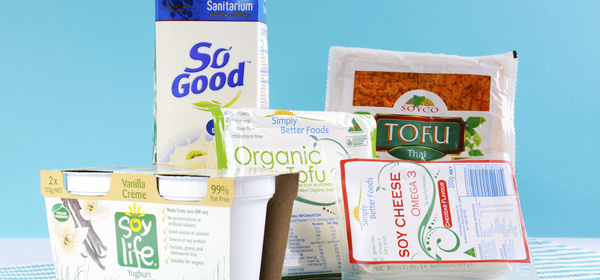The increased popularity of nut milks and soy milk, and a tendency towards going dairy-free often raises the question about the increased risk of osteoporosis, but is dairy the best way to get the recommended calcium intake? And how much calcium do we need in our diet?
How much calcium is enough?
Calcium is the mineral critical to strong, healthy bones, and it is also essential for the healthy functioning of the heart, muscles, blood and nerves. If a person’s calcium intake is inadequate, the body will start stripping the mineral from the bones, leading to weaker bones and an increased risk of fractures.
The recommended daily calcium intake according to Osteoporosis Australia varies depending on age and gender, but women over the age of 50 need around 1300mg per day and men of the same age need around 1000mg per day. It sounds easy, but fewer than half of Australian adults get the recommended intake of calcium. To reach the required figure you would need to eat between three to five serves of dairy per day. However, due to an inability to absorb calcium through dairy because of a Vitamin D deficiency, this isn’t an option for everyone.
So what non-dairy alternatives are available to help you boost your calcium intake?
Non-dairy calcium options
There are ways to get the required amount of calcium through other foods. Canned salmon and sardines contain edible bones that are rich in calcium. Soy-based products and tofu are also strong sources of calcium. Other great non-dairy sources of calcium are; almonds, dried figs, dried apricots, broccoli, mustard cabbage, bok choy, silverbeet, cucumber, celery and chick peas. There are also some products, such as breakfast cereals, that are fortified with calcium.
Are supplements an option?
Osteoporosis Australia recommends trying to get your required calcium through dietary methods, however, if this is proving too difficult, you can take calcium supplements. Doses of 500–600mg per day are considered safe and effective to boost your calcium intake. The most common supplements are calcium carbonate, calcium citrate or hydroxyapatite. Supplements may take the form of oral tablets (swallowed), effervescent tablets, chewable tablets or soluble powder.
What about those with dairy-free diets?
As with any diet that cuts out a whole food group, you should seek advice from your GP before making a big change.
If, for example, you have a need to cut dairy from your diet due an intolerance to lactose, then you could consider alternatives rather than eliminating it altogether. You may be able to eat dairy that is lower in lactose. Cheese is lower in lactose than milk and the higher fat content makes it easier to digest. Fermented cheeses, such as feta and cheddar are lower in lactose and hard cheeses like parmesan and romano contain very little lactose. Yoghurt is also a good option, as the bacteria digest much of the lactose before it is ingested.
For those who find it impossible to eliminate dairy, you may wish to consider taking lactese drops or tablets that can make lactose more easily digested. These drops and tablets contain lactase digestive enzymes which naturally occur in the body
In people who are lactose intolerant, the body doesn’t produce enough of this enzyme. The drops and tablets come in different strengths so you should consult your GP or pharmacist to ensure you take the correct dosage for your level of intolerance.
Related articles:
Osteoporosis – are you at risk?
Osteoporosis for dummies
Current osteoporosis treatments

